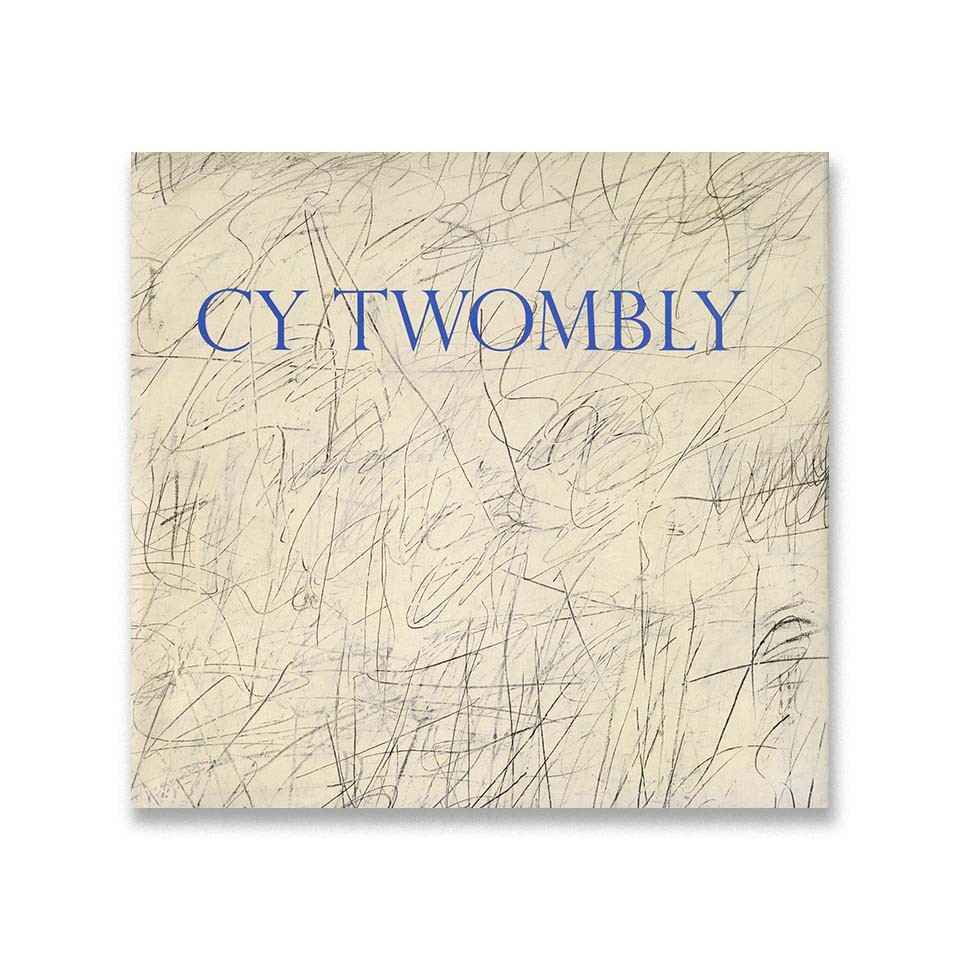

This catalogue, published alongside an exhibition at the Menil Collection, Houston, includes forewords from Paul Winkler and Julia Brown Turrell, Katharina Schmidt’s essay “The Way to Arcadia: Thoughts on Myth and Image in Cy Twombly’s Painting,” color reproductions, a list of works exhibited, a selected bibliography, and a biographical statement.
In her essay, Schmidt begins with Twombly’s relocation from New York to Rome in the 1950s, arguing that a physical departure from the New York art world facilitated a conceptual one. She discusses Twombly’s experiences at Black Mountain College with Robert Rauschenberg and offers extended consideration of Twombly’s North African Sektchbooks (1953). She turns to the development of Twombly’s signature line during his military service as a cryptographer, arguing that his subsequent artworks take on “the feeling of anonymous graffiti” (12) in contrast to the intimacy of his earlier practice. Schmidt identifies Twombly’s relocation to Rome—and concurrently produced artworks such as Olympia (1957) and Sunset (1957)—as a “transformation” in which “the entire field of Mediterranean culture…acquired a constantly growing, changing and deepening, yet abiding significance for his work” (12). She offers a close reading of The Age of Alexander (1959) and The First and Second Part of the Return from Parnassus (1959), drawing on central theoretical references such as Stéphane Mallarmé. Regarding Twombly’s engagement with mythology, Schmidt identifies a number of central sources and references, such as Ovid and Nicholas Poussin, and focuses heavily on recurrent mythological themes in Twombly’s practice, such as the Cnidian Venus. After reflections on Treatise on the Veil (1971), she returns to Twombly’s engagement with Virgil, focusing on his 1973 series of works on paper inscribed with the author’s name, and with John Keats, focusing on his Adonais (1975). She closes with consideration of Twombly’s natural history works on paper, Bacchanal themes, and engagement with Silex Scintillans, concluding that “through all these years the mediums of Twombly’s painting have changed little” (30) and that “again and again, the theme of Arcadia resounds explicitly or implicitly…Twombly depicts the search for a lost primeval state in a thoroughly symbolic mediated existence” (31).
For more on Twombly’s early practice and on the artworks discussed in this exhibition catalogue, see also major retrospective catalogues and monographs, such as: Richard Leeman’s Cy Twombly: A Monograph (2005); Mary Jacobus’s Reading Cy Twombly: Poetry in Paint (2016); Thierry Greub’s Inscriptions (2022); Cy Twombly: A Retrospective, ed. Kirk Varnedoe (1994); Cy Twombly: Œuvres sur papier 1973–1977, Musée de Grenoble (2023); and Cy Twombly: Making Past Present, eds. Christine Kondoleon and Kate Nesin (2020).
(Publication description by Jamie Danis)
Published on the occasion of the 1989 exhibition Cy Twombly at The Menil Collection, Houston (also traveled to the Des Moines Art Center, Des Moines, Iowa, 1990).
Cy Twombly. Essay by Katharina Schmidt. Foreword by Paul Winkler and Julia Brown Turrell. Published by Houston Fine Art Press, in association with The Menil Collection, Houston, 1990; 130 pages, 58 illustrations (45 in color).